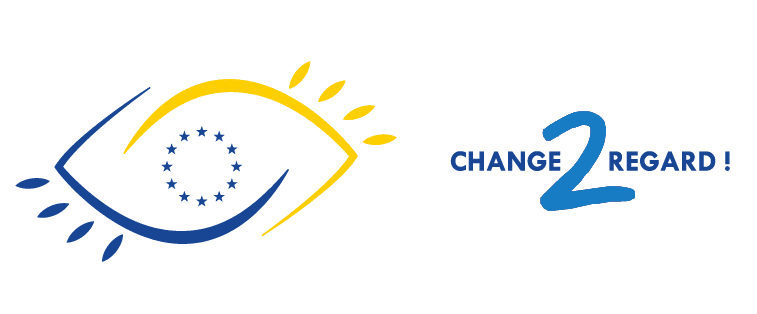WORK ON THE SOUND VISUALIZATION CONCEPT
As part of the Change2Regard project, the work developed by A.P.C.C. (mt Paulo Jacob and Prof. Suzete Azevedo) aim to deepen and reflect on the issues that associate music/sound with the visual arts (namely: painting, drawing and sculpture) in the concept of sound visualization.
As we believe that the two can complement each other, improving the ability of people with disabilities to express themselves, we have used a set of procedures aligned with this perspective:
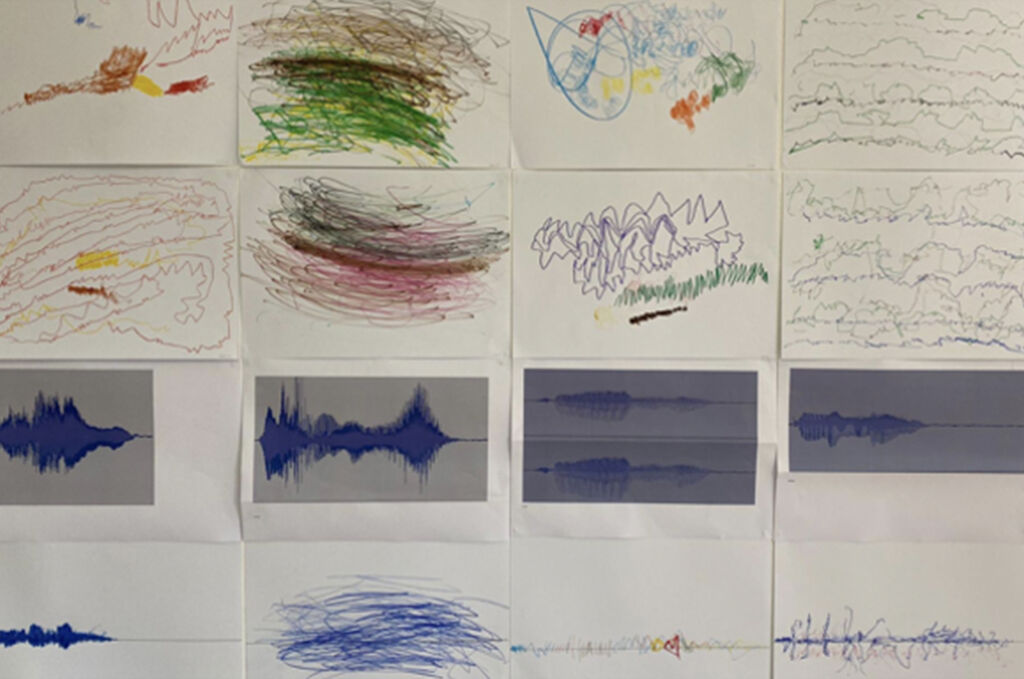
- Literature search on the concept of “sound visualization”
- Search for educational and artistic experiences on the theme
- Articulation with the educational service of Casa da Música (Digitopia for advice on issues related to “sound visualization” and the use of appropriate music software)
- Survey of Freeware Sound Viewer Programs
- OpenSource (or which uses visual information in addition to the sound/music component).
- Examples: HighC – Draw your Music (graphic composition and music creation program);

- Instrument A (ruipenha.pt) – Geometry applied to musical and sound organization

- Creatability (use of the Google Experiments platform, through the software: Seeing Music;SoundCanvas, …)

- Creation of two working groups (a visual arts group + music group).
- Experimentation with different sound visualization programs with the 2 groups.
- Reflecting on their use of sound visualization programs from a two-dimensional perspective
- How to see the sound?
- How to hear a painted image? A color ? A shape ?
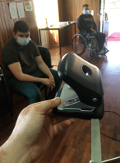
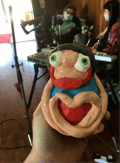
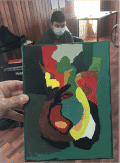
Carrying out activities and production
- Sound visualization – Draw the sound
The exercise developed is based on the use of technological tools (sounds), which reinforce its visualization through graphic exercises and drawing. By relating sound and visual parameters, the intention is to obtain a musical action that corresponds to another in the visual field. The result, which goes beyond perceptible reality, is revealed in the abstract representation, resulting from immediate gestures through the representation of sound.
The primary objective is the relationship in which sound and image complement each other, allowing a production of the symbiosis of the two, obtaining from the musical action a corresponding visual reaction.
We can say that the pencil here is an extension of the student’s body or thought.
The melody/sound produces in human beings the desire to externalize their feelings because it makes them think about their present or past situations or even those they dream about. Thus, the objective of making a drawing in relation to the music heard is to transpose onto paper these desires, wishes, dreams and feelings.
The visual artist Paul Klee identified formal relationships between music and the visual arts, presenting links between the melodic line and the line of the drawing: the rhythm and the sequences of modules and sub-modules, the tempo of the measures and the divisions of painting, the meter of music and the modulation of shapes and colors in the visual arts.
Although the concept of “seeing music/sound” is difficult to grasp, the correlation between image and sound creates an immersive sensory experience.
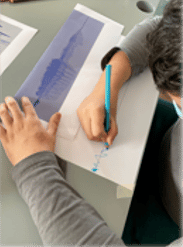

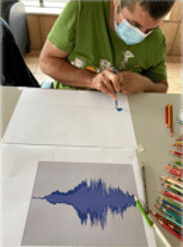
- Construction of a Play-Mobile (based on the work of Alexander Calder) combining the collection and development work of both groups (visual arts and music);

